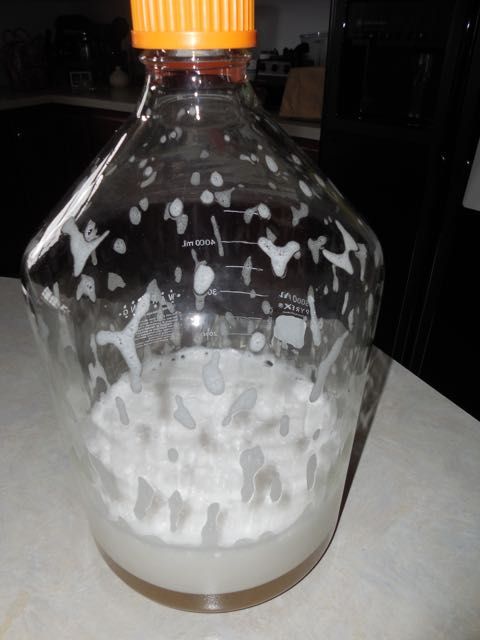So, basically this way I can use a smaller starter and still be good.
I usually use dry yeast, but this easy smaller starter method would make using more liquid yeast a good option.
The smaller starter volume comes from pitching at high krausen. As I mentioned above, it is important to use a vessel that is at least four times the volume of the starter, and the media must be shaken until there is more foam than liquid, preferably as much foam as the media can produce (it is very difficult to shake a starter that vigorously without a screw on cap). For example, using a 2L flask to prepare a 1L shaken, not stirred starter is a no-no, and so is using a 1 gallon jug or 5L flask to prepare a greater than 1L starter. I used a 1 gallon jug to prepare 1 quart and 1 liter starters for years before I found NOS 5L and 10L media bottles at price points that I was willing to pay.
My current Corning 1395 5L media bottle

With the above said, I shared this method with the community because I felt that there was a need for a low-cost, low-tech, shear stress-free method for producing a healthy starter. I hope that people do not attempt to generalize the method in the way that many specific methods have been generalized by the community. It usually works without fail if all of the conditions are met.